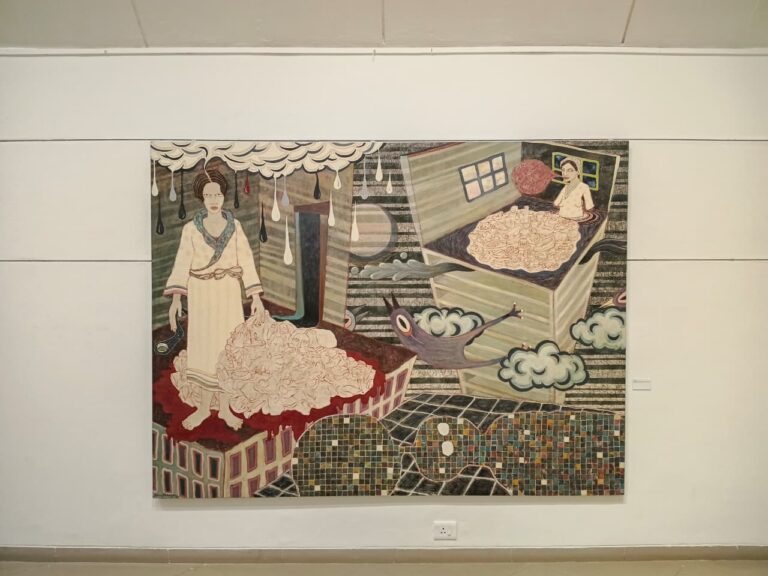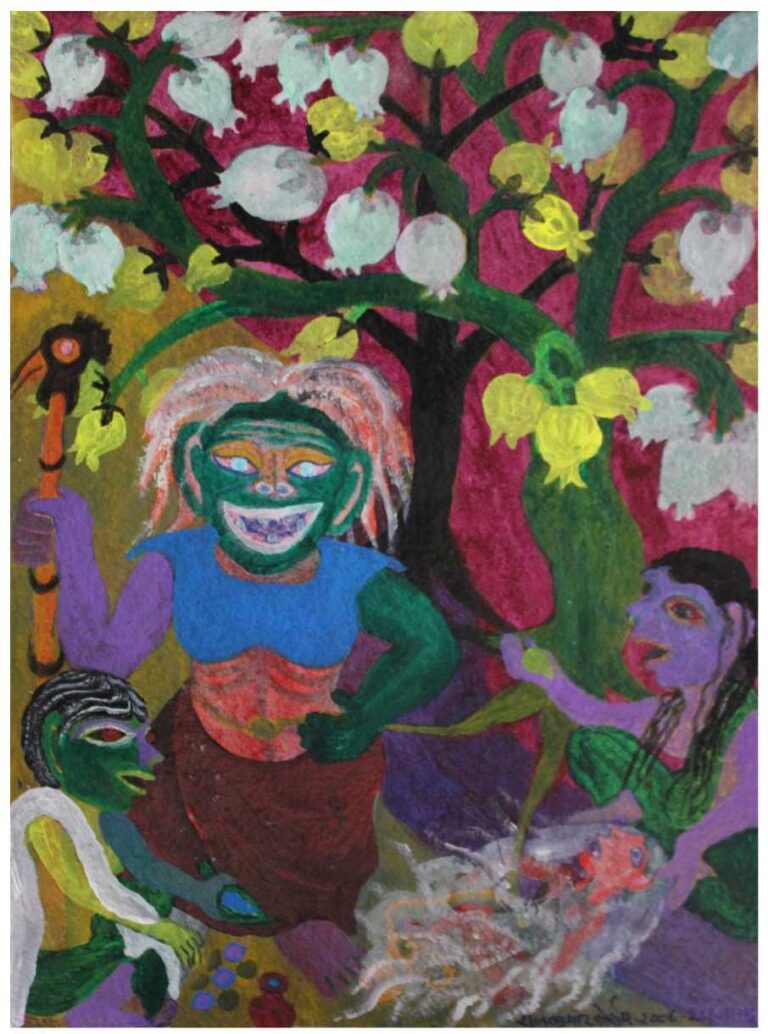
Publisher: Tulika Book
Publishing date: February 2010
Boxed set of 2 volumes
900 pages
10.5 x 7.5 inches
Full-colour with approximately 1000 visuals
Hardback
ISBN: 978-81-89487-59-1
Price: INR 5750
Amrita Shergil: Beautiful, bohemian, iconic, cross cultural; the subject of countless stories, articles, monographs; target of much innuendo, gossip by innumerable shyster bandwagoneers eager to establish their pathetic reputations as rakes/ loverboys.
But Amrita’s persona was much larger than the tittle-tattle trivia that surrounded her when she lived. Or after she died. As these two volumes so firmly establish. This was a woman who packed in many lifetimes across cultures, continents in her short twenty-eight year lifespan. A woman possessed of incredible insight, staggering confidence and an uncanny understanding of the sweep of history, an unerring sense of the aesthetic and of her own place in artistic history. And a huge talent. Mere gleanings of which are available to us through the body of work she left behind. Looking at the work today one feels a huge sense of loss. What we bear witness to is a very assured artistic impulse, nascent yet powerful, young yet so realized. Had this art attained efflorescence it might well have changed the history of Indian art. Forever.
In effect these volumes are Amrita’s autobiography. For its Amrita who’s speaking to us through innumerable letters to family, friends, relatives and art critics. You get a sense of a woman with a strong sense of her own destiny. And somewhere there’s a sense of ‘time is short and the water rises’. What else accounts for the sheer driven-ness of the woman to travel, to see, to document, to photograph, to assimilate, to absorb, to understand, to write, to paint at the frenetic pace she did? The 260 letters, 172 oils, innumerable sketches that pepper these volumes and indeed constitute their very substance bear evidence of a febrile, pulsating intellect, a mind like a sponge, an uncanny razor sharp intelligence. And reveal a woman of very strong convictions. Oddly prescient. Admirably undaunted by the prevalent aesthetic creed, the current wisdom of the artistic circuit which she debunked openly.
Memorably, one might add! As she did when she ripped into a prospective buyer, the legendarily rich Nizam of Hyderabad! Totally blasé about sabotaging the sale of her own works to him she ripped into him when he asked her opinion of his ‘collection’ of paintings. “How on earth could anybody with any taste buy Leightons, Bougureaus and watts when there were Cezannes, Van Goghs and Gauguins in the market?!!!” She’s brutally opinionated and uncaring if it shows as when she debunks Tagore’s poetry even as she (in her very prescient manner) offers guarded praise for his painterly forays “…Tagore’s work doesn’t equal a good Soutine though its certainly as good as a bad one… as for Tagore’s piddling little poetry I have as profound a contempt for it as I have for the mannerisms of the man himself. In fact the only thing that Tagore can do is paint” and she goes on to detail why she admires his painting even as she runs down his poetry “…he paints from the kernel which the Bengal people have no notion of”. She’s outright dismissive of the ‘insipid futilities’ of the Bengal Schoolwalas. “Ajanta is painting with a kernel. The painting of the Bengal School only has a shell. Its lots of things built around nothing, a lot of unessential things and it would cease to exist if those were taken away from it”. She’s canny, sharp, in the way she sees through pretense as when she discusses the work of the Hungarian mother /daughter Brunner duo who were painting wishy-washy ‘Indian’ images that are extolled even today. “… Primo, the mother, thinks she can dissimulate her complete inability to draw and paint under a cloak of sentimental mysticism”. The daughter is curtly dismissed as ‘absolutely mediocre’.
Amrita, clearly, was a woman above and certainly much larger than the political/social/aesthetic context of her time. The letter she writes as an eighteen year old to her father (‘Duci’ as she called him) who’s dissuading her from returning to India and accusing her of loose morals is ringing announcement of personal and artistic credo as well as rejection of his narrower mores of sexual and social conduct. “I wish to return primarily in the interest of my artistic development… how utterly mistaken you are when you speak of our lack of interest in India, in its culture, in its people, its literature, all of which interest me profoundly… Our long stay in Europe has aided me to discover, as it were, India. Modern art has led me to the comprehension and appreciation of Indian painting and sculpture. It seems paradoxical but I know for certain that had we not come away to Europe I should perhaps never have realized that a fresco from Ajanta or a small piece of sculpture in Musée Guimet is worth more than a whole renaissance! In short, now I wish to go back to appreciate India at its worth… I was rather sad to realize that you place the conservation of your good name above your affection for us I was also disappointed to know what a place of importance you give to the bickerings of public opinion… I don’t in the least consider myself an immoral person and I am not immoral… Besides I think you are rather dramatizing the situation (a thing you are apt to do at times) when you say the ruin of your good name is synonymous with our returning to India. Fools and mischief-makers will always talk even if one doesn’t give them food for it. And there are narrow-minded, prejudiced and fanatical people all over the world, in India too (as you found out at your expense) but need one bother about them?”
For Amrita art was not anodyne, exalted, the vehicle-of-the-higher purpose. A robust sensuality informed her work, one she averred was indeed the life source and progenitor of all great art. “… all art, not excluding religious art, has come into being because of sensuality, a sensuality so great that that it overflows the boundaries of the merely physical”. A truth that came home to her even more forcefully when she traveled to Cochin and saw the Mattancherry frescoes which she described in a passionate letter to her sister Indira. “I spend my days from morning till evening (that is to say, till the light fails) at a deserted place here. It contains some marvelous old paintings that have not been ‘discovered’ yet. Nobody knows about them and the local people, even the so-called responsible people like the Diwan, would destroy them I am sure if that were in their power – because some of the panels depict erotic scenes. Animals and birds copulating with the utmost candor, but curiously enough the human figures are never depicted in the act… it is only when one starts copying them… that one realizes what an astounding technique these people had and what an amazing knowledge of form and power of observation they possessed. Curiously enough, unlike the slender forms of Ajanta, the figures are extremely massive and heavy here. The drawing is perhaps the most powerful I have ever seen”. Quite evidently these frescos affected her as deeply as the Renoirs, Brueghels and Cezannes she’d seen.
She traveled the length and breadth of the country: From Himachal to Cape Comorin; observing, embracing, accepting, rejecting, and assimilating. At Mathura, the Gupta period sculptures had her in a thrall; at Bombay she decried the soulless, rootless pretty-as-a-picture postcard art that seemed to be the prevailing norm. Quite unafraid to swim against the current this young woman who was mocked at for being the new ‘Solomon’ of the arts decried the ‘Emperor’s New Clothes’ syndrome with the kind of blistering honesty that we could do with a massive dose of in the pretentious stance ridden ‘arty’ environment we live in today; one often devoid of any real thought, feeling, substance or resonance. Much of what Amrita said of Indian painting in the 1930’s holds true even today.
To her anything was “…worse than bad” if it was ‘mediocre’! Which was the word that to her defined most Indian art of that period circa 1930’s/early 40’s. She deplored the obsession with pretty-pretty, the tendency to be ‘illustrative’, ‘pictorial’ decrying it as ‘effeminate’, as non art that ‘devitalized’ and had quite lost the plot even as it fancied direct lineage from the great frescos of Ajanta and Ellora. “Art”, she declared, “cannot make the mistake of feeding almost exclusively on the traditions of mythology and romance” because “no art can do that with impunity for any length of time”. Indeed, “art must draw its inspiration from the present to create the forms of the future”. She deplored the prevailing tendency to do ‘tourist art’ and Indian art that was no better than poor imitation of already ‘fifth rate’ Western art whose viewpoint was in any case suspect, even frivolous. An observation that should have many contemporary Indian art makers squirming uncomfortably even today!
To read Amrita is to fall in her thrall, to be seduced and swept away by her. Here was a woman whose sensibility was shaped by art, literature, cinema, sculpture, the ancients, the Moderns, The Old World, The East; by French and German literature and poetry. A woman who fully absorbed and was enriched by the multiple cultures and artistic streams she enthusiastically dipped into and contributed to: a renaissance spirit forever questing. Amrita was no dilettante but distillate of all the cultural/historical/sociological processes that shaped and informed her remarkable intellect.
Vivan Sundaram, her nephew, needs to be congratulated on his wise decision to step back and not interfere in the dialogue between Amrita and her rapt audience. Because these letters, even eighty years on, speak to us. What he does is provide judicious, meticulously researched cross-references that further illumines what we are reading. Vivan renders himself invisible and foregrounds Amrita. And in this lies the strength of these invaluable volumes.
If ever there was a Michelin rating for literary work this one gets ten stars! Delicious!














